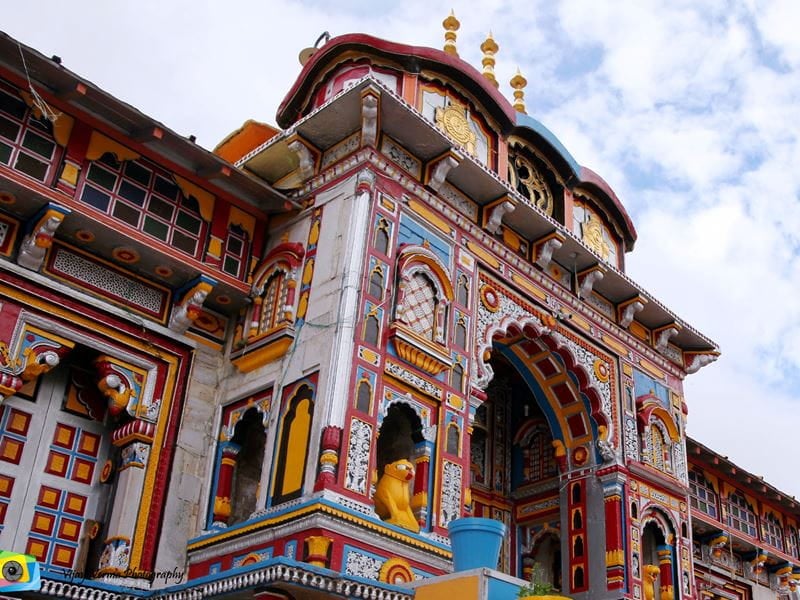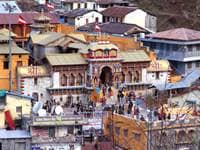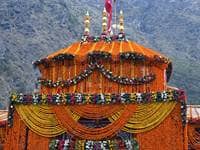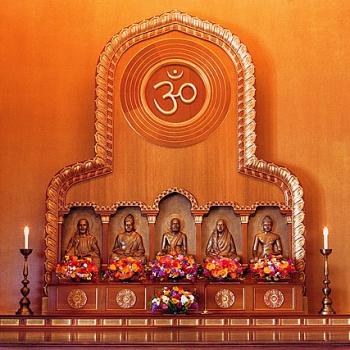
- Trending:
- Forgiveness
- |
- Resurrection
- |
- Joy
- |
- Feminism
- |
- Afterlife
The 100 Most Holy Places On Earth
Badrinath Temple





Also Known As:
Badarikashrama Temple
Associated Faiths:
Hinduism.
Accessibility:
Open to visitors from May through November.
Annual visitors: 1,300,000
History
There is no historical account of the founding of this temple—though there are records of its existence at least as early as the 18th century BCE. Owing to the lack of historical information on the establishment of the temple, there are a variety of legends explaining how and why this deity or that created it. Some perceive these as historical events, and others as religious tradition. Regardless, faith has stepped in to give an explanation for what historians cannot.
Some claim that the temple was originally a Buddhist shrine until the 8th century of the common era. However, it was supposedly then converted into a Hindu temple. The architecture certainly supports Buddhist influence, if not Buddhist origins. Yet, again, reliable records are not extant. So, some conjecture is at play here.
The temple has been repaired or rebuilt numerous times, due to aging, earthquakes, an avalanche, and expansion and updates ordered by various kings and rulers. Even though a temple-structure on this site goes more than a thousand years, the current Temple is approximately 400 years old. The current edifice is certainly a replacement structure—which is one reason why we know so little about the history. Were the original structure still standing, some additional details could be ascertained by its construction and design.
In 2006, the Indian government declared the area around the Badrinath Temple a “no construction zone.” Their intention was to curb encroachment on and around the site. To some degree, the measure has been successful. However, the once unincumbered view is now dotted by secular structures surrounding the temple, even if at somewhat of a distance. Such is the case with most Hindu temples in India. So crowded is the subcontinent that the line between the sacred and profane is often very thin indeed.
Religious Significance
The town of Badrinath is said to be “holy.” The Badarikashrama Temple is a significant reason for that. This “sacred site” of Hinduism is one of the most esteemed places of pilgrimage in all of India. During the months in which it is accessible, it averages thousands of visitors each day.
One Hindu holy text claims that the Badrinath Temple is one of the most sacred shrines—even when compared to the holy shrines in heaven. For Hindus, that is an enormous claim to make about an earthly site. And yet, it is a scriptural declaration that provokes reverence and awe for the Badrinath Temple. Pilgrims believe it to be the abode of the “Supreme Being” (Vishnu). As one of the three best-known and most revered of Hindu deities, the sites association with him makes it sacred to pilgrims and local residents alike.
The area of the temple is sometimes referred to as “Narada Kshetram” because a sage known as Narada Muni is said to have attained liberation (from the cycle of perpetual rebirths) here, after only five days of effort. Thus, some pilgrims make their way to the Badrinath Temple in the hopes of achieving samadhi–or enlightenment themselves. It is considered one of the eight places where the “eternal spiritual realm” manifests itself here upon the earth. And many believe that a visit to the shrine increases the likelihood of personal enlightenment—the ultimate goal of all Hindu practitioners.
In addition to being a place of heightened potential holiness leading to enlightenment, the Badrinath Temple is one of four holy places where Hindu pilgrims often go to accrue merit against their karma (or negative accountability). Thus, engaging in certain acts (like receiving the bathing water of the deity and circumambulating the temple) are believed to earn significant amounts of merit—more than one would earn by doing other popular acts of piety. Similarly, if one engages in darshan (or viewing the statue of Lord Badrinath—Vishnu), “the path to liberation easily opens up.” Many Hindus hold that, if you view the image (or statue) of the deity, you “will get the same reward” as if you had viewed the god Vishnu in “visible form.”
All of these factors play into the Badrinath Temple being an important place of pilgrimage. For those who are serious about seeking enlightenment and the expunging of theretofore unresolved karma, this is an important site to frequent. Many who come here believe in the salvific merit of a visit to this temple, and hold it to be an important “sacred space” because it is an abode of one of Hinduism’s most esteemed deities.








